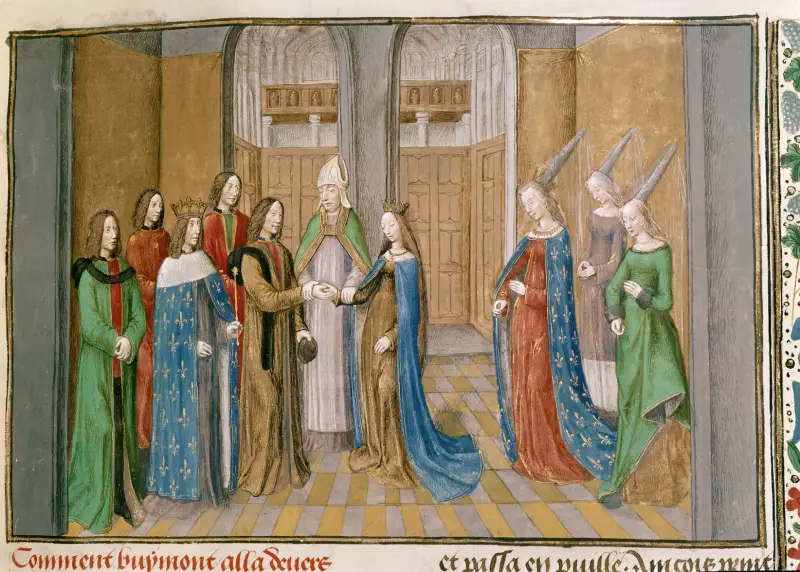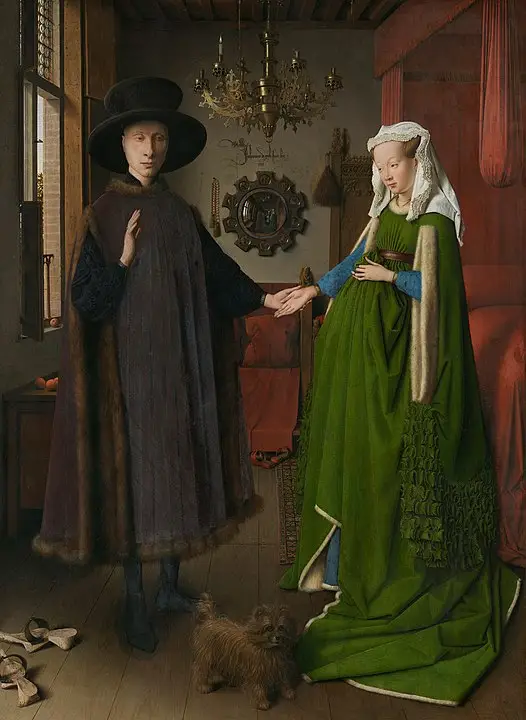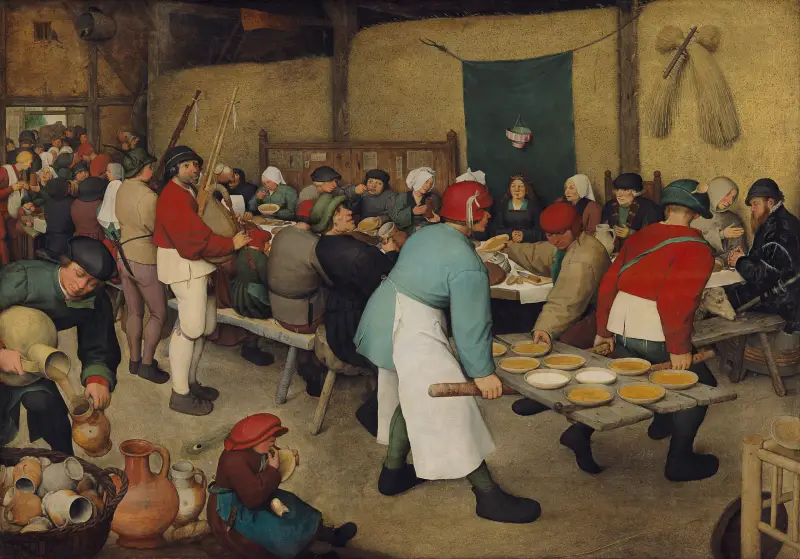Wedding in the Middle Ages

Marriage of Bohemond I and Constance. End of the 15th century
Marriages were rarely concluded for love, so there was little happiness in them. At least human. But the economic one was enough. Economic interests played an important role in marriage negotiations. Whether it was ruling kings or peasants, marriage solved a number of problems - increased family wealth, provided for offspring and resolved conflicts, including wars.
This does not mean that the couple lacked affection, passion or sexual attraction. Often this all arose later, but love rarely came. And the couple certainly did not live happily ever after. Both kings and nobles and peasants had low life expectancy back then.
Marriage
Generally speaking, throughout most of the medieval period, the legal age of marriage was 12 for a girl and 14 for a boy. As you understand, this is primarily due to the physiology of the reproductive systems. Although some boys got married only after the death of their father. Pure pragmatism - the father dies, the inheritance goes to the son, with his wealth more girls will agree to marry him.
Noble women sometimes had the option of not marrying until age 24, but this was rare. Wealthy orphans, heiresses and widows often became wards of the king. And these women or girls could marry court men who wanted to increase their wealth and lands. A lord or king could sell his ward's marriage to the most suitable candidate.
Peasants tended to marry according to their age and status, preferring to choose healthy women who were good at bearing children and healthy enough to work alongside them. Before marriage could take place, it was necessary to obtain the lord's permission. If peasants married outside the lord's domain, they paid a fine.
By the way, as now, then wives took their husbands' surnames. But the opposite also happened. For example, when the bride's family was more influential and famous.
Before marriage, one more mandatory procedure had to be followed - a virginity test. If the bride remained chaste until the wedding night, then the groom could receive more gifts, and his family would treat the girl better. Virginity testing was very different. And a physiological examination, and drinking water with amber, and all sorts of fortune tellers, etc. The lady could cheat, go to the doctor, who would put leeches in her private parts, which allegedly somehow masked her loss of virginity.
The couple could not always marry. And there could be reasons for that. You know, the priest asks the guests if any of them know the reason why these two cannot be together. And at the last moment someone bursts into the church and shouts: “I know the reason!” Like in the movies. Or he could simply write this reason on a piece of paper that was hung before the wedding. If the argument was suitable, then the marriage was prohibited.
These reasons could include:
• blood relations;
• monastic vow of one of the spouses;
• treason;
• violence;
• serious crime;
• fasting – at this time the church did not enter into marriages.
Clothing and jewelry
Until the 16th century, wedding rings in medieval Europe were worn on the ring finger of the right hand. Then they changed it to the left one. Usually, an oath, words of love and fidelity were engraved on the rings inside or outside.
Rarely did peasants buy a new outfit specifically for a wedding. It was expensive. Usually, wedding clothes were the best clothes that the bride and groom had.
The bride's veil was often worn, but it was part of her everyday wardrobe, and not something special. White dresses, associated with mourning, were almost never worn. They preferred green - the color of young love, and blue - a symbol of purity. Material: cotton or linen. Rich brides could afford dresses made of velvet, satin and silk.
The men didn't have much choice. No three-piece suits, as we are used to now. Clean trousers, camisole, shirt.

Portrait of the Arnolfini couple, Jan van Eyck. 1434 London National Gallery
Garters were worn by all women as part of their everyday clothing, securing the stockings just below the knee. The garter has become a mandatory element of the wedding. It was this that the guests tried to snatch before the young couple went to their bedroom.
And yes, guests and priests followed them. And they looked. “Oh times, oh morals!”, as Cicero would put it. Although in Ancient Rome they did not see this.
Wedding traditions
When the newlyweds left the church, the guests showered them with money. After the wedding ceremony, the bride received a ring, and the groom received a stocking or dress sleeve. These gifts were considered intimate and hinted at the upcoming wedding night.
They gave the bride a child in her arms, wanting her to give birth to more children. At some weddings, children were replaced with rabbits, which could then be eaten. But it is not exactly.
More often than not, the choice of best man or witness at a wedding was not a relative or friend, but the best fencer. Allegedly, he guaranteed that the wedding would take place. And he could stab someone who was against her. But this is my version.
During the early Middle Ages, priests did not conduct the ceremony. The couple simply said their vows in front of the altar. The man stood on the right, the woman on the left. Sometimes it’s the other way around, if the bride’s family had a strong advantage over the groom’s side.
All sorts of different things
Briefly about what you can’t imagine a wedding without.
No expense was spared on the wedding feast. For example, the wedding feast of the Italian merchant Francesco Datini and Margherita included: 406 loaves, 250 eggs, 100 pounds of cheese, two quarters of ox and 16 mutton, 37 capons, 11 chickens, 2 boar's heads, an unspecified number of pigeons and game, local provincial wines. But it was quite modest compared to the feasts of the royal families.
If the couple was poor, their families and friends brought food for the feast itself, and helped with things and money to equip the house for the feast and a new life. Now they don’t bring food, but they give gifts.
The bride's dowry was provided by the parents and guardians. A large dowry made a woman more attractive as a potential wife if she was otherwise not so pretty. A commoner's dowry included household utensils, tools, furniture, clothing and livestock. If the husband died or the marriage was annulled, the dowry was returned to the bride. Then it passed to her sons. If the widow remarried, the dowry was returned to the remaining family of the first husband.
The husband gave a gift to his wife after marriage. Most often these were women's jewelry and furniture.
Guests and priests at some weddings were also given gifts that emphasized their status.
Well, where would we be without flowers?
Roses and lilies are the main choice. The petals of these flowers were scattered at the wedding ceremony. To make the smell stronger, guests specially trampled the petals. Wedding wreaths were made from rosemary, a flower that symbolized fidelity and memory.
In general, a lot remains from those times, not only in Europe, but also here. Something, of course, like witnesses to a wedding night, seems out of the ordinary to us.
Medieval marriages were not without problems - there was a possible large age difference, and there were economic reasons. But still, the weddings of those times continue to fascinate and intrigue us, as did the era of the Middle Ages as a whole.

Information